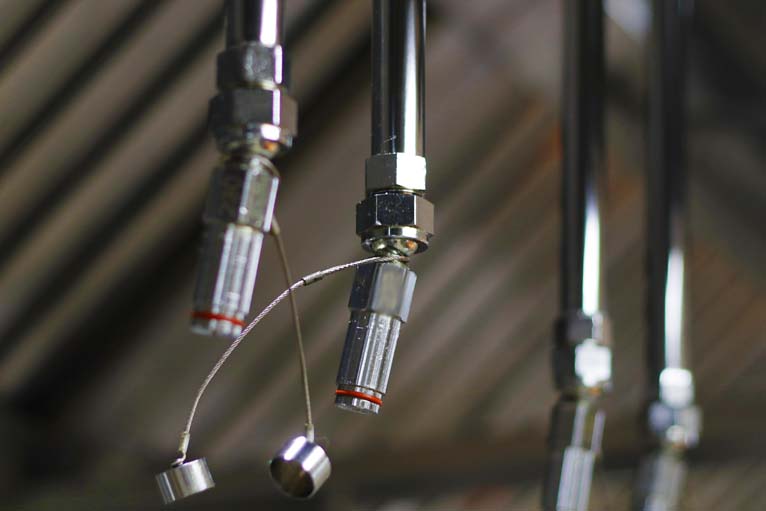A recent article in kitchenventilatio.com explored Food Hall and Mixed-Use Retail property kitchen ventilation design. These designs can be challenging in the best of circumstances and require detailed scope definition to ensure all elements are identified. Another aspect of Food Hall and Mixed-Use systems is that they lend themselves to shared or manifold grease exhaust ducts due to infrastructure limitations. Routing multiple hoods to a single trunk line and exhaust frees up infrastructure space. Controls used in these applications allow for the independent operation of the hood systems.
A schematic example of a manifold duct is shown here. In this example, there are 5 independent exhaust hoods tied to one exhaust fan.

In this scenario or others like it, how is the fire suppression system protected? The relevant standards can be found in National Fire Protection Association (NFPA), NFPA 96, Standard for Ventilation Control and Fire Protection of Commercial Cooking Operation, NFPA 17A, Standard for Wet Chemical Extinguishing Systems, and NFPA 13, Standard for the Installation of Sprinkler Systems.
All hood fire systems must meet UL300 standards. This standard, among other things, ensures that the medium used to suppress the fire does not allow for reflash over a specified period. Ansul R102 is an example. There are “dual agent” systems that use wet chemicals followed by water as well.
When designing a system that has a shared or manifold duct, there are specific requirements to address the fire suppression requirements for the hoods, plenum, and duct connection. In NFPA 96, Section 10.3 covers Simultaneous activation. First, you need to identify a single hazard area. NFPA 96, 3.3.44 defines it where two or more hazards can be simultaneously involved in fire by reason of their proximity, as determined by the authority having jurisdiction. Multiple hoods using a single fan would qualify based on their connection to the duct and proximity to each other.
NFPA 17A provides the standard for the hood, appliance, and duct protection as well as requirements for simultaneous activation on a common duct.
Section 5.6.2 Protection of Common Exhaust Duct provides two methods for complying with the protection of the hazard area:
5.6.2.1, Common exhaust ducts shall be protected by one of the following methods:
- Simultaneous operation of all independent hood, duct, and appliance protection. In this case, if there is fire under one hood, all hood fire suppression systems will activate as well
- Simultaneous operation of any hood, duct, and appliance protection system and the system protecting the entire common exhaust duct. In this case, one hood fire suppression system would operate, and the sprinkler system would discharge in the common duct not protected by the UL 300 systems. More details and requirements on sprinkler systems can be found in NFPA 13
It is important to confirm with the Authority Having Jurisdiction (AHJ) that your specific design meets their requirements for fire protection. A more thorough review of the referenced standards will provide further details on the design and execution of the system.
Read more articles relating to Kitchen Ventilation Design
Subscribe to kitchenventilation.com
Stay up to date by subscribing to Halton’s Commercial Kitchen Ventilation Blogs by entering your email address to subscribe and Halton will provide you with the latest information on commercial kitchen exhaust hoods, pollution control units, air handling, and safety systems. You will receive notifications of new posts by email.


Comments
One response to “What are the fire suppression requirements for a shared or manifold duct system?”
[…] another article relating to fire protection – What are the fire suppression requirements for a shared or manifold duct […]